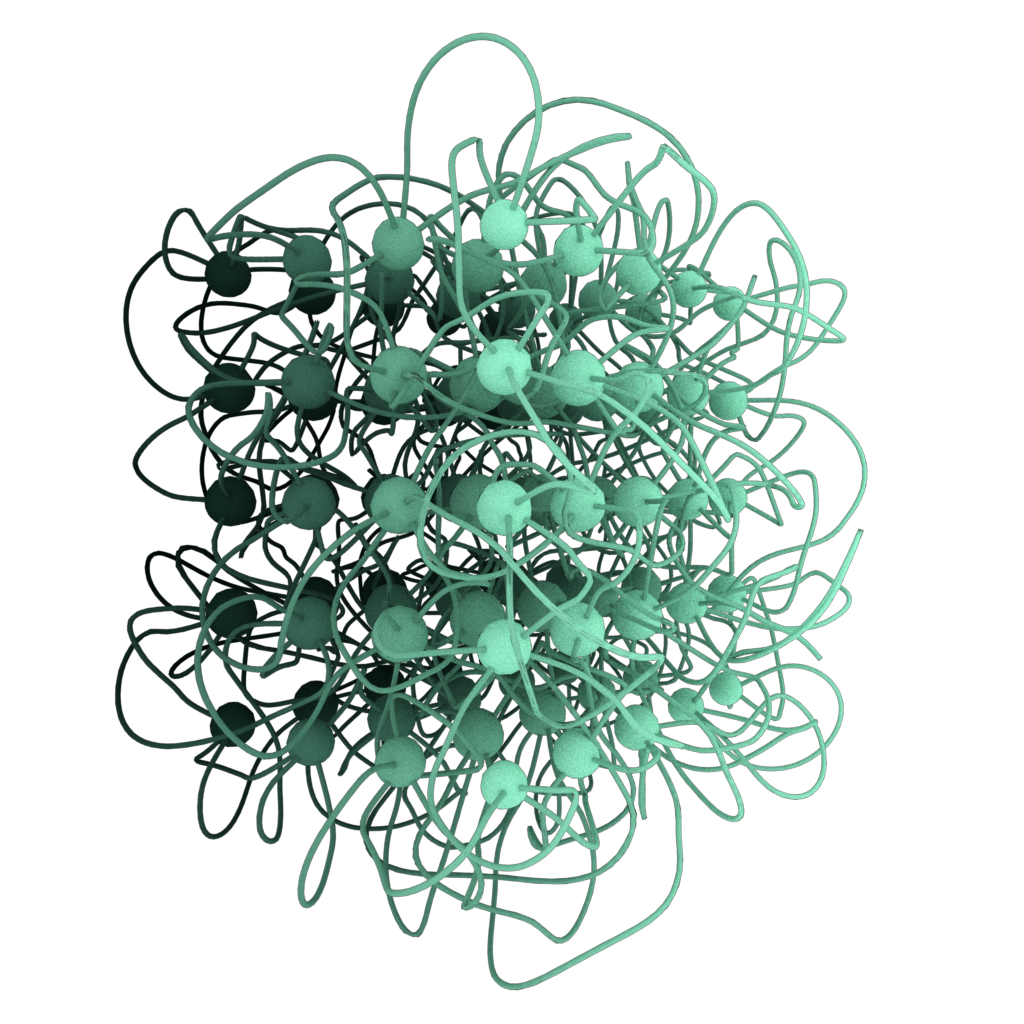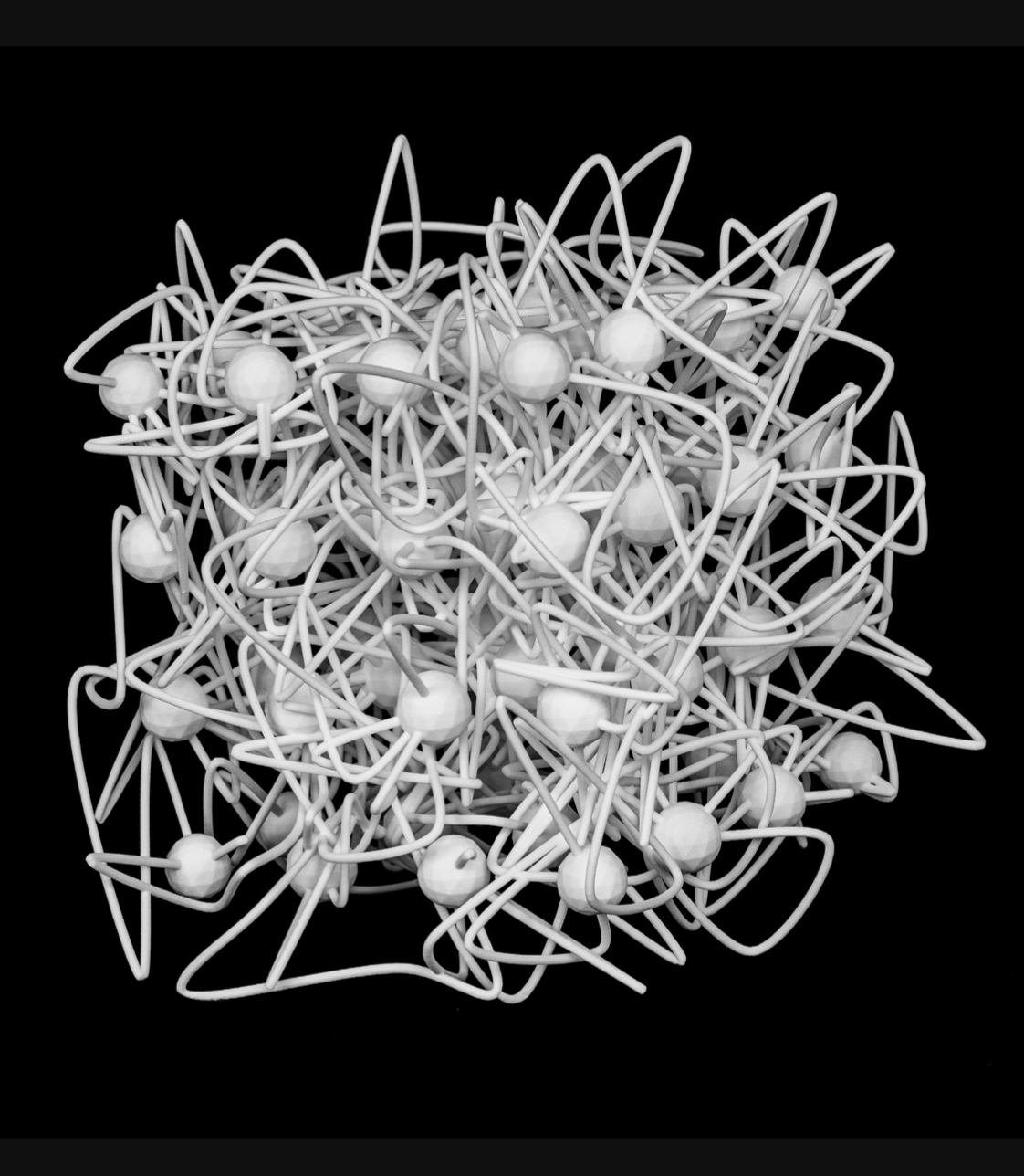Just as air temperature captures the randomness of the air’s molecular trajectories in the gas, the temperature of a network describes the degree to which individual links wander in space. A zero-temperature network has only straight links. The links of a “hot network,” by contrast, swerve and curve as they reach their destination.
2020
Heat
About the work
The physicality of a network often forces its links to deviate from a straight line as they struggle to find a path to their destination. The need to quantify these deviations inspired The BarabásiLab’s development of the “network temperature” concept.
Team
Heat, by A.-L. Barabási, N. Dehmami, and Y. Liu, for “Isotopy and Energy of Physical Networks,” in Nature Physics volume 17, pages 216–222 (2021)












Contact
Social